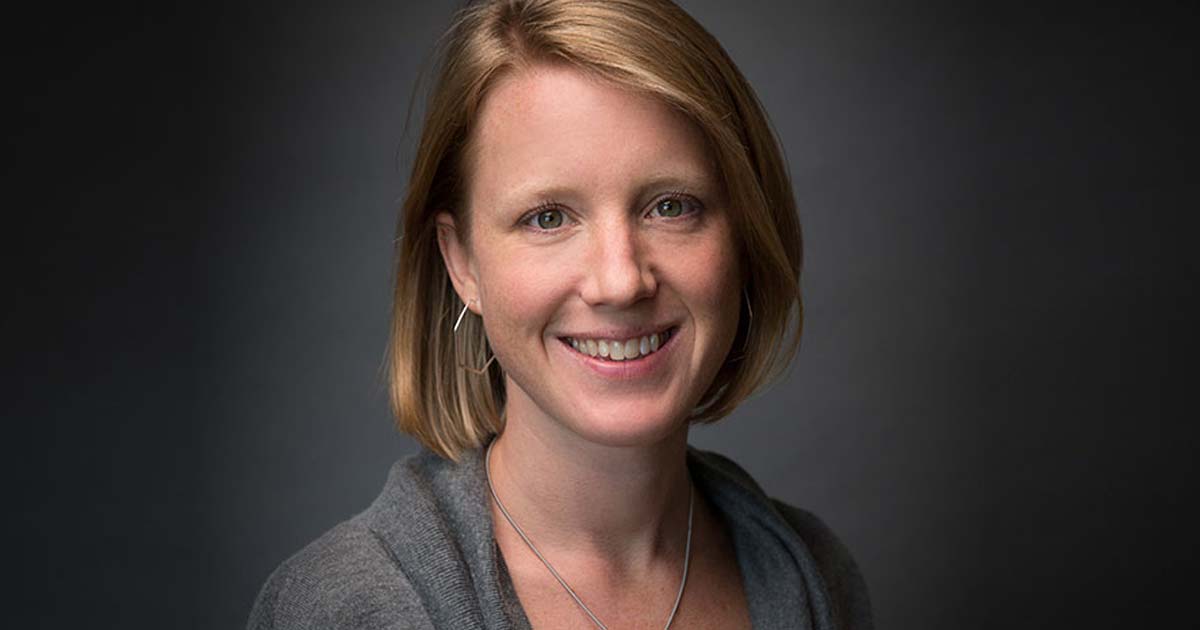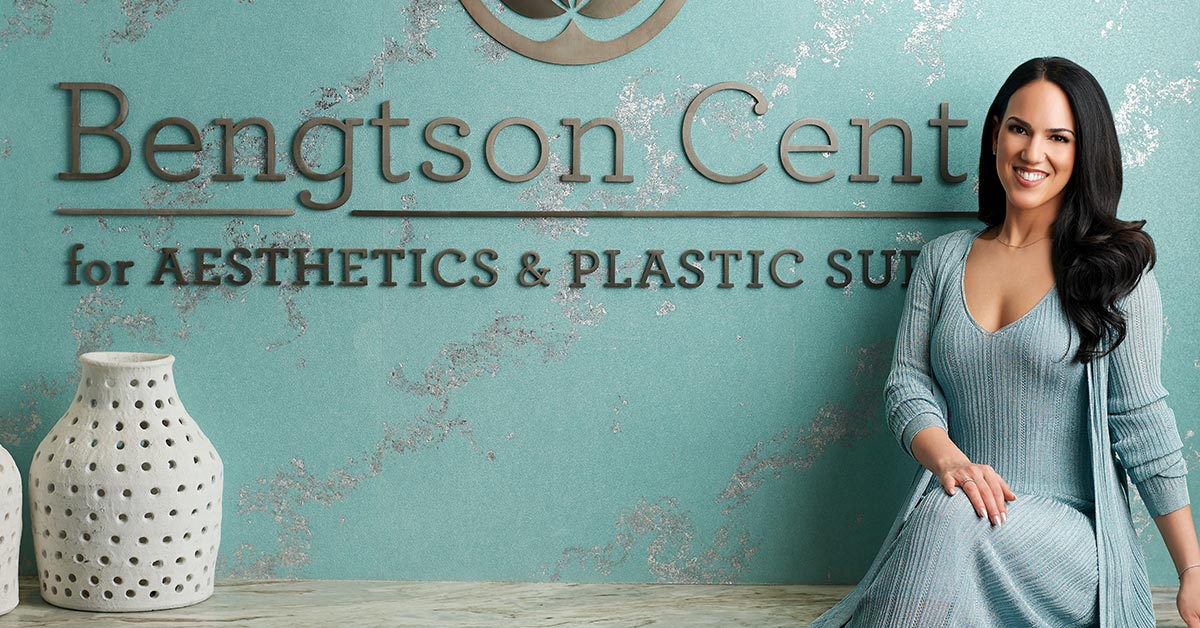On January 1, 2021, Megan Feenstra Wall, Architect, Mathison | Mathison Architects, will become the first woman to serve as President of the American Institute of Architects Grand Rapids (AIA GR), an organization dedicated to advancing the value of architects and to improving the quality of the built environment.
Feenstra Wall recently delivered a riveting virtual talk at the AIA GR Honor Awards, where she discussed the makeup of the architectural profession and how it needs to evolve in order to remain relevant. Feenstra Wall was also part of the national AIA task force to rewrite the Framework for Design Excellence with other architects from around the country. The result was the creation of a 10-point document all architects can use throughout a project to ensure the spaces they design are equitable, resilient and healthy.
West Michigan Woman sat down with Feenstra Wall to discuss her goals, diversity, and how her industry could continue to change for the better.
What does it mean to you to be the first female President of the American Institute of Architects Grand Rapids?
I am honored to serve in this role. The Grand Rapids chapter of the American Institute of Architects has been serving our local community of architects and designers in West Michigan for nearly 100 years, and I'm proud to join that legacy.
Along with this honor, I admit I am frustrated to be the first woman in this position. That it's happening in 2021 is a sign that we're behind many other professions where women have been making more significant inroads. We are losing that talent, all that potential—not to mention the increased profitability diverse teams have proven to bring. Women and men graduate with architecture degrees at nearly the same rate, yet in the seven years (on average) it takes post-education to earn a license, women leave the profession, making up less than 20% of licensed professionals. Far fewer are in leadership roles.
So, while I'm honored to be "a first," I wish I were a third, or fourth, or seventeenth. I'd much prefer my gender to be unremarkable and see more women ahead of me on this path!
What are the goals you hope to accomplish during your term?
The AIA began with the mission to promote architects and architecture. It's still our mission, and one I will do my best to support. We want to drive positive change through the power of design. The AIA and the profession have begun to both recognize our homogeneity (white, male) and the effects of our projects beyond a traditional project "scope." Our work directly affects broader communities and ecologies. For example, the built environment contributes nearly 40% of carbon emissions. Construction is resource-intensive and our early role in the construction process means that architects can directly influence climate action through better design.
In the '00s, West Michigan had more LEED certified square footage per capita than anywhere else in the country. We're not even on the top ten list anymore. I plan to support and promote the work of our local AIA Committee on the Environment (COTE) and strengthen our relationships with the City of Grand Rapids and other local organizations to continue to build momentum towards a more sustainable West Michigan. Excellent design is sustainable, equitable, and healthy. If not, then it's not good design—no matter how beautiful.
Certainly, equity and diversity are top on my list, as well. Earlier this year, I was talking with the first Black woman licensed as an architect in the state of Michigan (1983). As we were chatting about her work experience, I asked her why she often found herself in the public sphere, rather than private practice. "They couldn't see me where I saw myself," she said of firm management. I think about that phrase quite a bit.
I was surprised when Vice-President-elect Kamala Harris said nearly the exact same sentence at her acceptance speech in November. It's so hard to be something that you can't see. I'd like to make women and minority architects more visible, so those outside of the profession and those just starting out see themselves in architecture. Since then, there are still fewer than 15 Black women who have been licensed in Michigan.
My final area of focus is simply to reconnect and re-engage. This year, our volunteers and members are overstretched and overburdened. At the same time, we are all weary of isolation and virtual connection and ready for "normalcy." Yet the pandemic changed us. This is an opportunity not to return to what we were but instead to rethink what we've been doing as an organization and refocus our services and programming through the lens of our mission and vision. We need to stay safe, healthy and relevant.
What can be done to further increase diversity in professional architecture?
This is such a difficult question! As an organization and a profession, the AIA and architects have been working on this for decades with very slow progress. The male-dominated construction industry and the long path to licensure create certain biases and pinch points that women feel more acutely, enough to call it quits before they can even legally be called "architect." Right now, American mothers are dropping out of the workforce at a rate three times that of fathers due to pandemic-related childcare issues, yet I'm trying to stay optimistic that some of the flexibility the pandemic has forced upon the American workplace will filter through to a more open-ended view of work and leadership that could bring about positive change for women in the profession.
A few years ago, I started a gathering of women in architecture in West Michigan. With a preschooler and toddler twins at home, I was suddenly feeling the dearth of mothers in my field. Most I knew lived far away in cities on the coasts. Our group meets informally, but knowing I am not alone means something to me. I'm seeing a large influx of talented, driven, and tough young women in architecture in Grand Rapids right now and that makes me very excited.
Racial diversity is even more difficult to address. Black people make up about 2% of registered architects; Latinx, less than 1%! Minorities are underrepresented even in schools of architecture. Recently, a group of local architects and contractors started an ACE Mentor Program of West Michigan. Afterschool programs like these provide pathways into architecture, construction, and engineering to under-represented high school students. At my firm, Mathison | Mathison Architects, we're trying to think about diversity more broadly, from the vendors we use to who we ask for recommendations for contractors or manufacturers—even where our coffee comes from in the office.
I think we always have to keep in mind why we care in the first place. In reality, very few Americans have access to an architect and our design work, yet architects' designs directly affect our communities and our climate. We can't ignore that anymore, and I think if we were more diverse as a profession, we'd probably have a better idea of where to start. Along with this, studies continue to show that diverse leadership teams make for more profitable businesses. Diversity and equity are important.
While working on the Framework for Design Excellence Task Force, why was it important that the framework included points to ensure spaces are designed in an equitable, resilient and healthy way?
Sustainable design has always valued occupant health, durable materials, and fair product and waste streams, but we often think of the more technical and measurable tenets of sustainability like energy performance or water efficiency. Those are still very important. The Task Force wanted to make sure that these other areas remain top-of-mind, too. I think about the Framework's question, "Who might this project be forgetting?" quite often. It's a different way to think about our work and drives us to a different value system than just the bottom line. I heard an architect who is blind explain how a person doesn't feel disabled until someone, like an architect, puts a barrier in their way.
Resiliency is so important as our storms increase in strength and frequency. I think of the derecho in the Midwest last summer or our own polar vortex from last year. Projects can be designed to protect life but also to stay up and running or to recover quickly when there's a disaster. The pandemic has shown us how unequal our health outcomes are based on our race and our zip code. As we're shut inside and isolated, we're realizing how our homes, schools and workplaces can contribute to—or detract from—our overall wellness and well-being.
There's a lot of responsibility in the design of the spaces we inhabit, and architects are up to the challenge!
Written by Sarah Suydam, Managing Editor for West Michigan Woman.
Photo courtesy of Mathison Architects.




